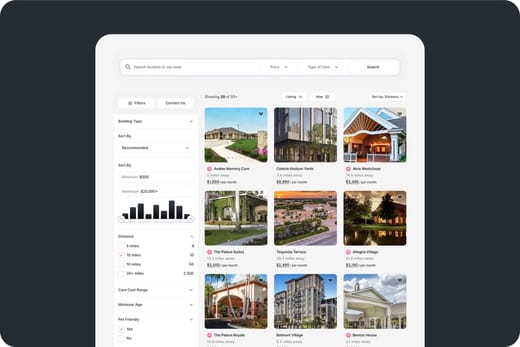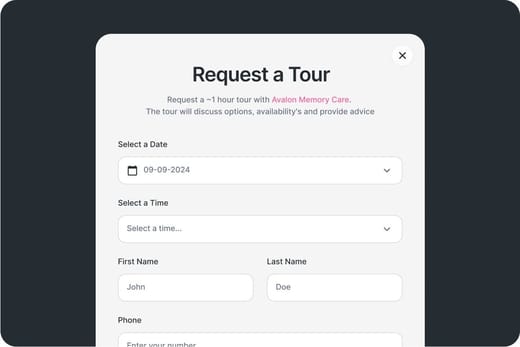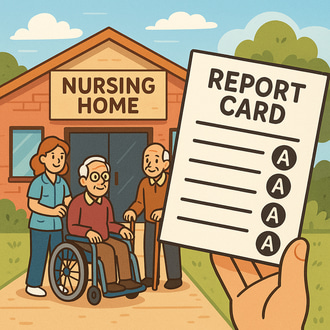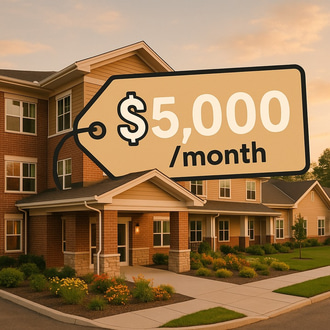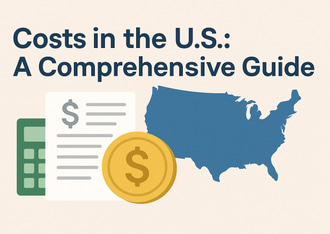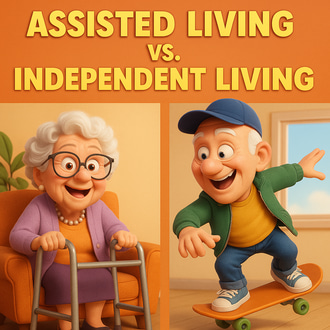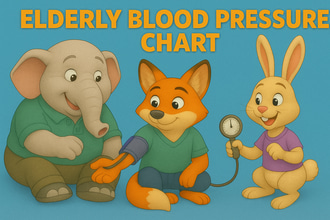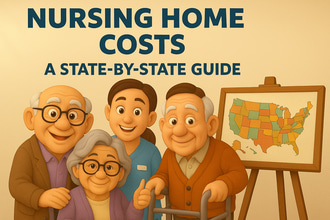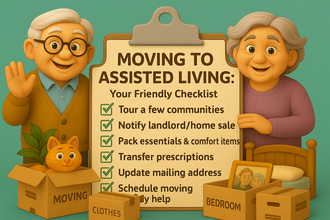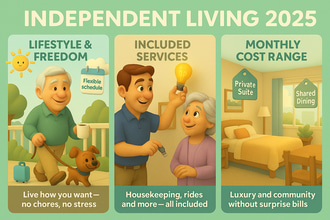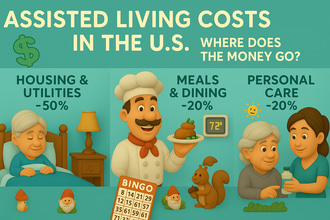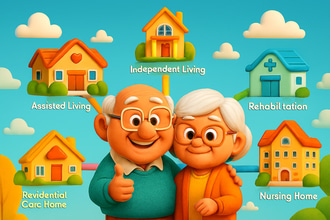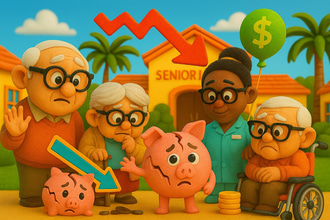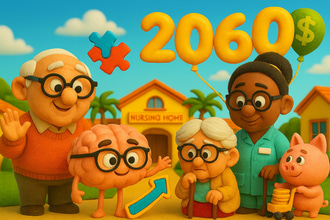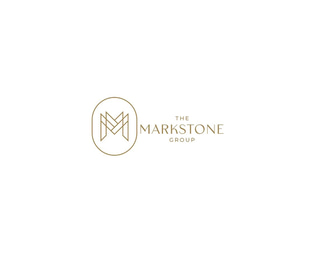Since the mid-20th century, for-profit nursing homes have played a massive role in the U.S. healthcare system. They dedicate themselves to providing older residents long-term care while operating as businesses seeking financial returns. This double purpose usually raises important questions about how these providers balance delivering quality care and profitability. Hence, in this article, we will delve deeper into how the economics of for-profit nursing homes work.
Financial Trends for For-Profit Nursing Homes: From 2000 – Present
From the early 2000s to the 2010s, for-profit nursing homes in the U.S. operated on small profit margins of 0.6% and 3.8%. By 2018, profits turned negative (-0.3%) as rising costs and a shift to home care providers reduced occupancy. In fact, by 2019, nearly half of nursing homes reported losing money.
Payer Differences
On the other hand, Medicare, which covers short-term skilled nursing care, has historically been the most profitable segment. From 2000 to 2018, Medicare for freestanding nursing facilities reported over 10% margins yearly. In contrast, Medicaid (which pays for long-term care) paid less, leading to average losses of -3.0% in 2018. This means that nursing homes lose money on average on non-Medicare residents.
Financial Pressures Over Time
Over time, other factors such as occupancy rates and the breakout of COVID-19 also made significant impacts on the profit of these nursing homes. Occupancy rates dropped from 88% in the early 2000s to 81% by 2019, then fell further during the pandemic. As occupancy rates drop, fewer residents share the fixed cost, further pressuring the margins. Medicaid’s share of residents also grew and added financial strain. Meanwhile, the for-profit share of nursing homes rose from 65% in 2000 to 72% in 2024, driving concerns about cost-cutting and care quality.
Nursing homes also took a massive hit from new costs during the pandemic, which was temporarily relieved by federal relief. In some states, like California, profit margins briefly rose to 7% in 2020 due to emergency grants and Medicare advances. However, these gains were temporary as occupancy remained 10% lower than before COVID-19, labor costs increased, and many providers suffered losses again.
In conclusion, for-profit nursing homes’ finances have gotten tighter over the years, with Medicare-funded operators and efficient for-profit providers staying the most stable.
Revenue Sources and Payer Mix in Nursing Homes
To further understand how for-profit nursing homes make money, it is essential to know where their revenue comes from, including:
Medicaid
Medicaid is the largest payer for nursing home care and makes up about half of a facility’s revenue. Since 2024, Medicaid covered around 63% of nursing home residents, including their room, board, and nursing services. However, Medicaid reimbursement often covers only 80% or less of actual costs, forcing providers to seek additional funding. In some states, funding gaps remain even after increasing their Medicaid rates and providing supplemental payments.
Medicare
Medicare pays for about 12–15% of residents who mainly need short-term rehabilitation after a hospital stay. Although Medicare patients only account for around 11% of total resident days, they still contribute 20 to 30% of a provider’s revenue due to their higher reimbursement rates. Despite the recent shifts to a new Medicare SNF payment model, Medicare remains an important source of revenue for for-profit nursing homes. Because of this, nursing homes actively attract Medicare patients by partnering with hospitals.
Private Pay (Out-of-Pocket)
Another source of revenue for for-profit nursing homes is residents who pay out-of-pocket. As of 2024, this group makes up about 24% of residents who pay the highest rates around $8,000 to $12,000 and above per month. These payments often cover Medicaid shortfalls, but the number of private-pay residents decreases as more people deplete their assets and switch to Medicaid planning.
Private Insurance
Some revenue comes from other health plans and private long-term care insurance, which covered around 8% of total long-term care costs in 2021. Additionally, Medicare Advantage plans are now covering more short-term rehab stays. In some states, Medicaid plans also offer Medicaid payments to nursing homes. Private insurance reimbursements can still be important for specific providers despite contributing smaller revenues to nursing homes.
Other Income
Nursing homes may also earn additional revenue through VA contracts for veteran residents, managed care incentives, and other on-site services like therapy, hospice, or dialysis billed separately. These sources constitute about 6.8% or $8.55 billion of total nursing home revenue in 2019.
Realistically, a typical for-profit nursing home receives about half of its revenue from Medicaid, a quarter from Medicare, and the rest from private pay and other sources. This mix can differ depending on the provider, with some relying more on Medicare and private insurance while others serve primarily long-term Medicaid residents.
In conclusion, financial stability depends on maintaining a profitable mix of these revenue sources. Nursing homes with more Medicare and private-pay residents tend to improve significantly financially, while those with a high percentage of Medicaid patients often struggle to break even.
Cost Structure and Major Expenses For For-Profit Nursing Homes
For-profit nursing homes’ cost structures often face high costs, primarily in labor, property, and operational expenses. Below is an overview of nursing homes’ significant expenses:
| Cost Category | Share of Revenue (2019) | Details |
| Direct Care Costs | 66% of total revenue | Labor Costs are the most significant portion of nursing home expenditures, with around 27% of revenue going to nursing staff costs. This category includes nurse aides, licensed nurses, rehab therapists, and other direct costs such as medical supplies, diet, and social services.Labor costs have risen recently due to workforce shortages, higher minimum wages, and reliance on temporary staff. |
| Administrative & Overhead | 34% of revenue | This category includes management salaries, corporate overhead, insurance, and regulatory compliance.Regulatory Compliance includes mandated staff training, infection control, and meeting state regulations.Liability insurance is a notable cost under this category and has increased in litigation-prone states, especially post-COVID. |
| Real Estate Costs | 8–15% of revenue | Real estate and facility costs vary depending on the ownership structure.Most for-profit nursing homes lease buildings from separate real estate owners, often at high rental rates.Some nursing homes also require expensive repairs, which some operators defer due to tight budgets. |
Profit (Net Income)
On average, profit takes 0 to 5% of the revenue after expenses. In 2019, the average reported net margin was just 0.58% but went around 8.8% after excluding certain accounting expenses. This happens when for-profit operators shift profits to related businesses, such as real estate companies, to reduce their reported earnings.
For example, a report stated that most New York nursing home owners who used related-party transactions made more money from those side businesses than their nursing homes.
Overall, profit margins for the nursing home industry have been low on paper, but well-managed providers can achieve mid-to-high single-digit margins, while struggling ones may operate at a loss.
Key Cost Drivers
While all categories of nursing home costs are important when analyzing profitability, some of its components contribute more significant impacts than others, including;
- Staffing – This component is the largest single cost among nursing home expenditures, including wages, benefits, and recruitment expenses. Factors such as raised minimum wages or mandated caregiver wages affect this component and contribute to increased costs. Occasionally, for-profit homes manage costs by keeping staffing near minimum required levels, which can affect the quality of care and services provided.
- Regulatory Compliance – This major expense includes infection control, emergency preparedness, and meeting staffing mandates to ensure nursing homes meet federal and state regulations. It contributes to an increased cost as compliance with these regulations often includes hiring specialized staff, documentation systems, and legal requirements, which entails additional expenses.
- Litigation & Insurance – Quality assurance fines or litigation costs, including lawsuit settlements can also affect finances and become part of providers’ expenditures.
In summary, labor and property costs consume most of a nursing home’s revenue. To stay profitable, controlling staffing expenses, improving efficiency, and maintaining a high-paying revenue mix of Medicare and private-pay residents must be done by nursing homes.
Case Studies of Profitable Nursing Home Operators
Amidst the tight industry margins, some for-profit nursing homes still succeeded through their expert business models and effective cost-management strategies. Here are some of the notable case studies demonstrating various strategies:
The Ensign Group – Achieving Growth with High-Margin Services
The Ensign Group is one of the most financially successful for-profit nursing homes in the industry with over 200 skilled nursing facilities across multiple states. The company has grown revenues to approximately $5 billion since 2021, with a capitalization of $4.5B.
Their winning strategies include focusing on short-term rehab residents, maintaining high Medicare/managed care occupancy, and partnering with hospitals for post-acute patients. They also use an aggressive acquisition strategy of acquiring underperforming facilities and turning them around.
Critics also noted Ensign’s lean staffing and economies of scale, while using a real estate investment structure to manage property costs. In return, Ensign has consistently shown solid profits even during the pandemic. The company demonstrated that “doing well by doing (relatively) more with less” can make you one of the most profitable nursing homes in the industry.
Private Equity Playbook – HCR ManorCare and Carlyle Group
HCR ManorCare, on the other hand, met a very different ending than The Ensign Group. It was formerly a major nursing home chain acquired by the private equity firm Carlyle Group in 2007. Carlyle extracted profits from the deal by selling nearly all of ManorCare’s nursing home properties to a healthcare REIT for $6.1 billion, allowing Carlyle and its investors to regain their investments within a few years.
On the other hand, ManorCare was left with high rent and a debt of $472 million, along with property tax burdens and maintenance costs for the buildings. To manage the financial burdens, the company resorted to cost-cutting strategies like staffing cuts which led to declining care quality.
By 2018, ManorCare filed for bankruptcy and was taken over by non-profit ProMedica Health as part of a restructuring. This case illustrates how financial strategies can generate short-term profits but jeopardize long-term sustainability. Specifically, it demonstrates how profit maximization through sale-leasebacks and cost-cutting can drive an enterprise to a breaking point.
Related-Party Enterprises – “Hidden” Profit Strategy
Another common strategy in the for-profit nursing home sector is shifting profit from nursing home accounts into related businesses they own, known as related-party companies, such as real estate or supply companies.
In New York, around 72% of for-profit homes paid fees to their related companies to transfer their profits while reporting lower earnings on paper. This strategy allows operators to gain revenue while maintaining the appearance of financial strain, which can affect the quality of care in some cases.
One analysis even found that certain nursing homes paid 40–50% more in rent per patient day to related real estate companies than providers with third-party landlords. Those nursing homes also tended to spend less on staffing and have lower quality of care. This case shows how related-party companies complicate profitability assessments by hiding profit from public reports.
Overall, these studies demonstrate how expert for-profit operators utilize one or more of these profit strategies, which can affect their profits and quality of care differently.
The External Factors That Affect Profitability
In addition to costs, several external factors, including government policies, regulations, and market trends, can heavily affect the profitability of for-profit nursing homes in ways like:
- Reimbursement Policy Changes
Medicare’s shift from the RUG-IV payment system to the Patient-Driven Payment Model (PDPM) altered revenue patterns and increased profits for some operators. However, ongoing adjustments by CMS and growth in Medicare Advantage that negotiate lower rates or authorize fewer days continue to affect revenues. In terms of Medicaid, most states are shifting to Managed Long-Term Care, which can affect payments or require meeting specific quality metrics to get full reimbursement. In conclusion, reimbursement changes can significantly change industry margins yearly.
- Staffing Regulations
Labor costs are directly affected as regulatory standards for staffing tighten. New CMS staffing mandates, phased in from 2024–2026, require higher nurse staffing levels. Consequently, compliance with these mandates will lead to increased labor costs, and many facilities may struggle to meet these requirements without additional funding. This can significantly affect profits unless covered by higher reimbursements.
- Quality-Based Incentives and Penalties
Programs like the Skilled Nursing Facility Value-Based Purchasing (SNF VBP) initiative financially reward or penalize homes based on rehospitalization rates and quality metrics, which can moderately affect revenues. In some states, Medicaid programs with pay-for-performance components give bonus payments or higher rates to providers with better staffing and care quality rates. CMS can also provide civil monetary penalties for regulatory violations that impact troubled for-profit homes’ finances. Additionally, having lower ratings can affect a provider’s payer mix and indirectly affect their profitability.
- Industry Consolidation
Consolidating nursing home providers from large chains and private investors acquiring facilities has mixed impacts on profitability. Although consolidation allows owners to use complex profit strategies, private equity involvement has sparked concerns over cost-cutting at the expense of care quality. Consolidation can also lead to increased ownership transparency for owners, resulting in policies limiting certain profit-taking behaviors.
- State-Level Regulations
Some states have enacted laws that directly affect nursing home finances. One example is the law implemented in New York, which requires at least 70% of revenue to be spent on direct resident care, at least 40% on staff costs, and a 5% cap on profits, further influencing financial performance. Once enacted, these laws can directly tighten the profit margins of for-profit nursing homes and hinder their ability to gain profit through related entities.
- Market Trends
Trends like Home and Community-Based Services (HCBS) expansion also affect profit by reducing nursing home occupancy rates. Having lower occupancy rates can directly hurt profitability, especially if homes cannot maintain at least 85% of their residents.
- Pandemic-Related Costs and Future Public Health Requirements
In addition to a short-term financial shock, COVID-19 led to many lasting effects on nursing home economics. Since the pandemic, nursing homes have seen higher and more costly infection control standards, staffing shortages, and regulatory oversight, all of which have long-term financial implications. Despite receiving billions of relief funds to cover COVID-19 costs and lost revenue, for-profit nursing homes still face higher baseline costs. On the other hand, the pandemic raised public awareness of nursing home conditions, which can lead to further oversight and potentially more funding.
Bottomline
The economy of for-profit nursing homes relies on complex interactions between factors like cost management, revenue sources, and regulatory requirements. While Medicaid plays a dominant role in for-profit nursing homes’ revenue, its low reimbursement rates can also lead to a financial strain. Rising labor costs, stricter regulatory mandates, and evolving market trends also add to profitability challenges. To thrive against these challenges, operators must learn how to create a balance between strategic planning, operational efficiency, and adaptability while putting care quality at the top of their priority.

